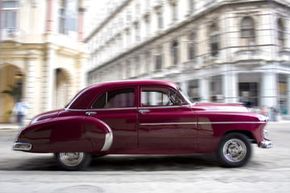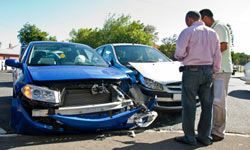I'm one of those people who waves at other motorists and, occasionally, stops to have a window-to-window chat -- without rude words or gestures. Whether this is a factor of Midwestern hospitality or the condition of the dirt roads I frequent is probably too fine a point to debate. A recent discovery that one in seven of those drivers is probably uninsured, however, is a bit disconcerting. I guess I'd better keep both hands on the wheel; less waving, more defensive driving.
According to the Insurance Research Council, an estimated 14 percent of U.S. motorists hit the nation's byways without the protection of vehicle insurance [source: Insurance Research Council]. Even if vehicle owners do have insurance, whether they carry sufficient coverage is another matter entirely. Driving an older car, especially one that's paid off and perhaps not in the best of shape, can make it tempting to downsize insurance costs. So, just how much insurance do you need for an older car?
Advertisement
"The notion that you can drop all non-required coverage on your automobile simply because it is older is just not true," says Andrew Schrage, co-owner of Money Crashers Personal Finance.
Without insurance -- or without sufficient insurance -- you're making your finances vulnerable to potential lawsuits. "In today's overly litigious society, you can never be too careful when it comes to insurance coverage," Schrage says.
The truth is, if you're at fault for an accident and only have minimal insurance, you'll wind up paying dearly for it: You'll be legally responsible for any damages that aren't covered by your insurance, and these costs can really add up. You could find yourself footing the bill for property damage and medical costs, as well as legal fees for any court battles that may erupt. This will put your other assets, including your home, savings and the very car that got you into the mess, at risk [source: Ohio Department of Insurance].
The amount of insurance coverage you should buy for an older car depends on a number of factors, Schrage adds, including your net worth, your driving record and the value of your car. (To learn the value of your vehicle, consult the Kelley Blue Book, Edmunds or a similar resource.) Your insurance coverage also should comply with the minimum insurance coverage mandated by your state.
Advertisement





